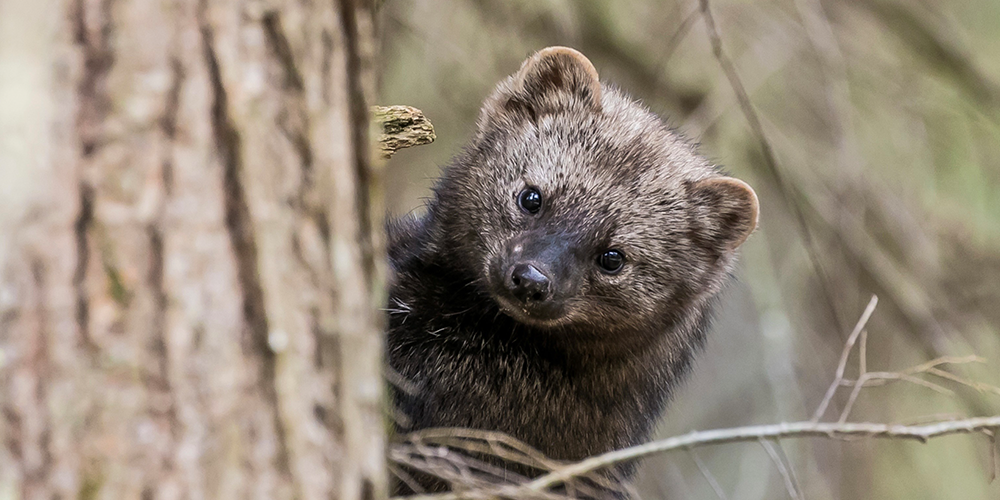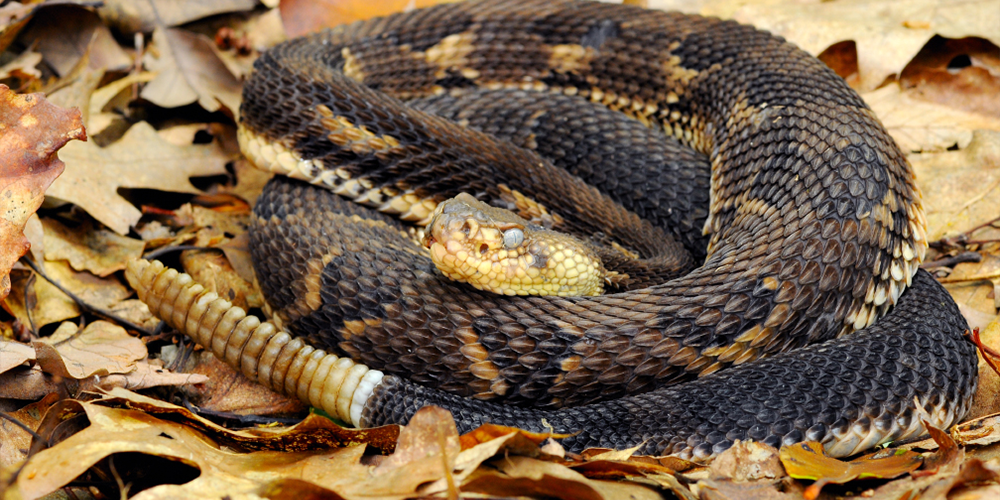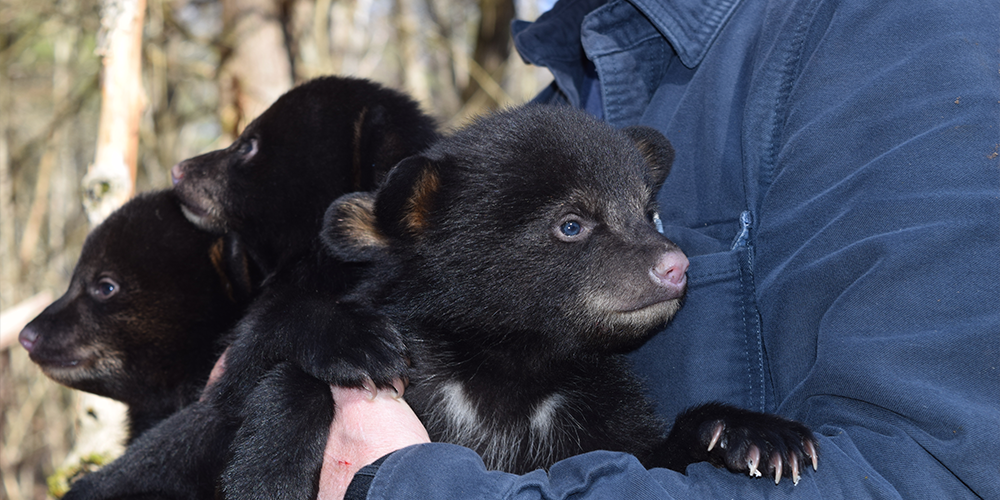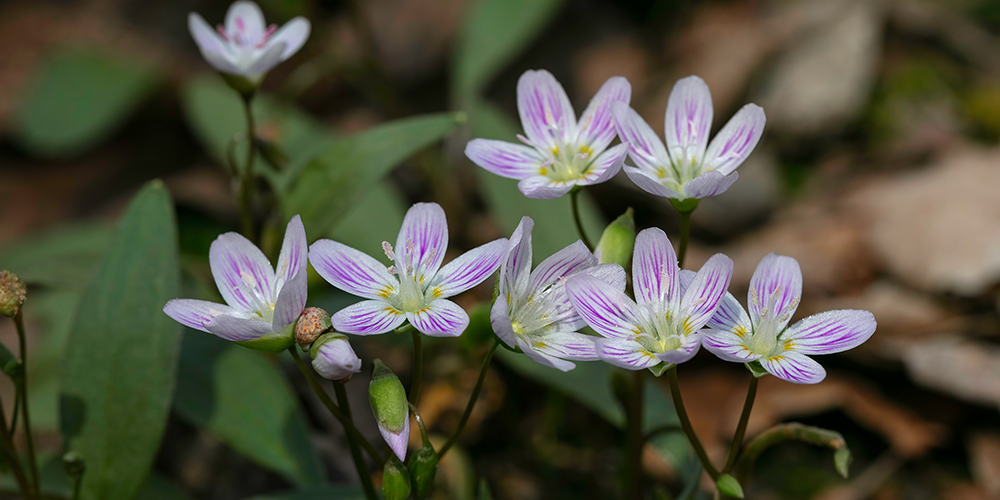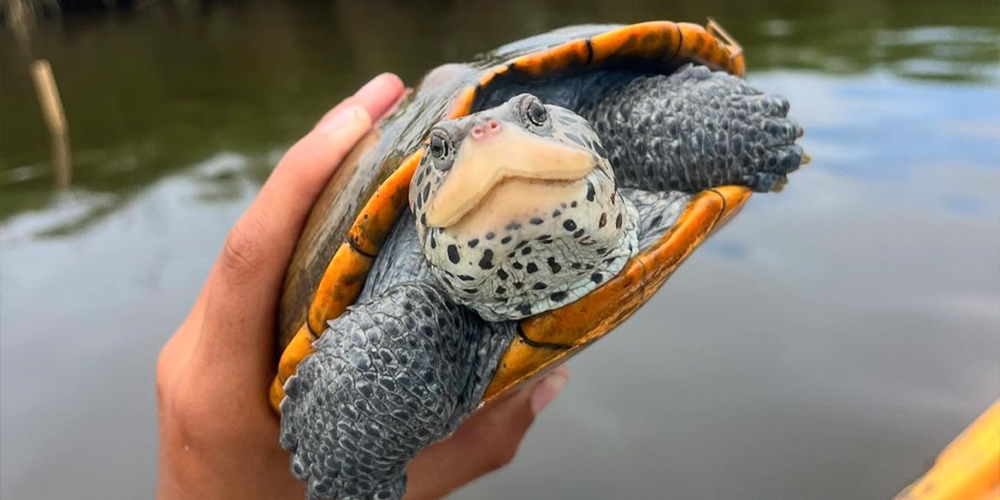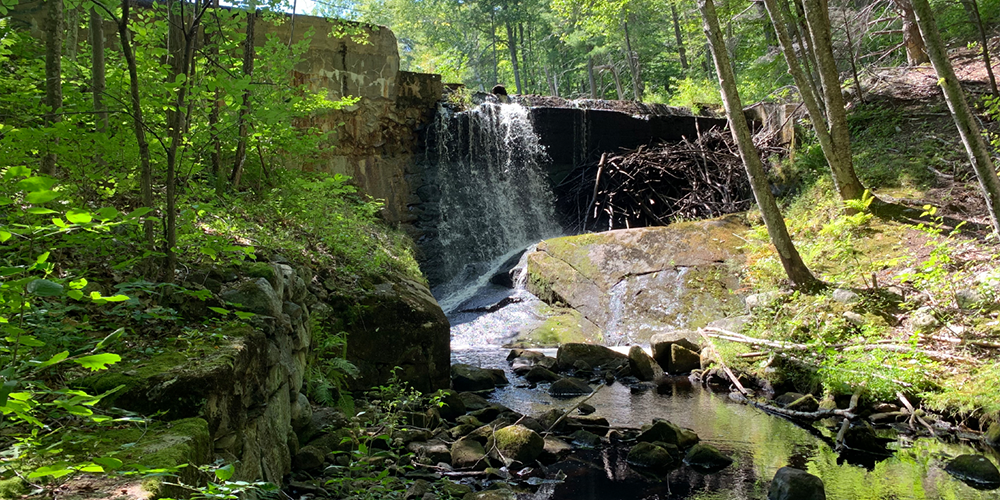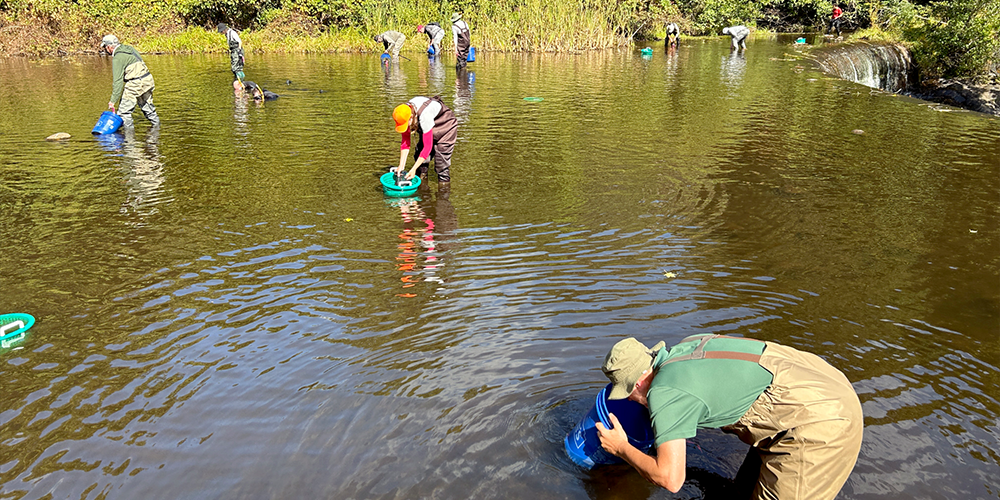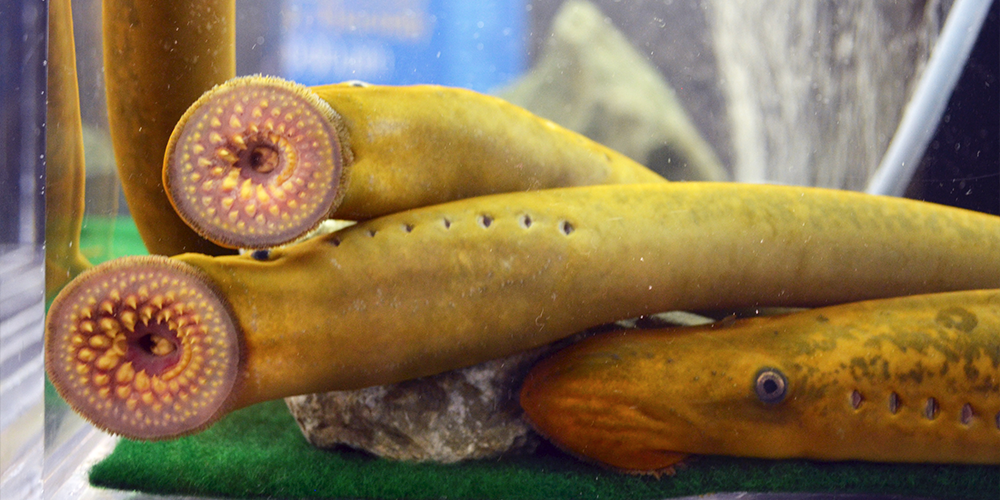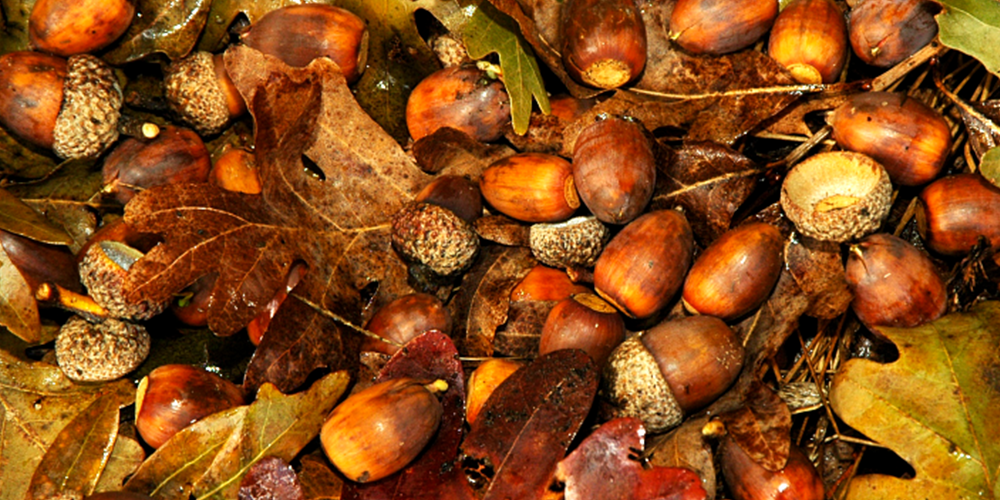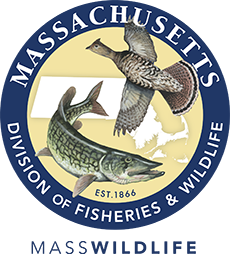- Division of Fisheries and Wildlife
Media Contact
Media Contact, MassWildlife
1. Subterranean science: Tracking bats in MA
This winter, MassWildlife biologists and staff surveyed abandoned mines and natural caves in western Massachusetts looking for hibernating bats. To do this, biologists carefully entered the mines and caves in late winter to identify and count individual bats, check for signs of disease, and check the security of the mine or cave. This year, MassWildlife and the Department of Conservation and Recreation (DCR) explored a new property and found two previously unknown bat hibernation sites! Data collected from these surveys help our biologists determine how to best protect endangered bats in Massachusetts and help them recover. Dive deeper into MassWildlife’s bat surveys.
2. Fishers: fact vs. fiction
Fishers, sometimes called "fisher cats," are elusive and often misunderstood creatures. Though they’ve gained a reputation as vicious predators, fishers are shy and solitary, preferring to avoid humans whenever possible. Because they are rarely seen, many people don’t know much about them. Why are they called fishers? How big are they? Will fishers attack people or pets? Do they scream? Find these answers and more as you separate fact from fiction.
3. Frequently asked questions about rattlesnakes in MA
Many residents are surprised to learn that Massachusetts is home to timber rattlesnakes. MassWildlife posted a video filmed by the State Herpetologist of a timber rattlesnake displaying its name-sake behavior of rattling the end of its tail and it prompted many questions from Massachusetts residents about these fascinating snakes. Why do rattlesnakes rattle their tails? What should you do if you see a rattlesnake? How big are they and what do they look like? Why are rattlesnakes endangered and how are they being conserved? Find the answers to these questions and more.
4. Researching black bears in a mild winter
For the last 40 years, MassWildlife biologists have visited bear dens in the winter to collect valuable data. The limited snowfall and warmer temperatures experienced this winter presented a new challenge for this decades-long research project. During den visits, biologists document the health and weight of the sows while weight, sex, and body condition data is recorded for cubs and yearlings. Read more about this long-running research project.
5. Spring ephemeral field guide
Early flowering plants that produce leaves, bloom, and set seed quickly after the snow melts in the spring are referred to as spring ephemerals. Many people look forward to the appearance of these appealing wildflowers with great excitement as they represent the change of season. Spring ephemeral flowers provide the much-needed first nectar and pollen of the season for over-wintering pollinators, including bumblebee queens, mining bees, halictid or sweat bees, early butterflies, beetles, flies, and gnats. Spring ephemerals are only out for a short time so bookmark this spring ephemeral field guide for warmer weather.
6. Tracking terrapins in the Buzzards Bay estuary
This summer, MassWildlife launched an exciting new project in partnership with Zoo New England to study diamond-backed terrapins in the unique ecosystem of Buzzards Bay. These medium-sized turtles are native to southeast Massachusetts and their numbers have been decreasing in recent years. To bolster conservation efforts, biologists first have to estimate the population and movement patterns of these turtles using a variety of techniques, including visual surveys, marking terrapins and recapturing, and acoustic monitoring. The first season of terrapin tracking was a success with the team documenting 915 diamond-backed terrapins. Take a closer look at this new turtle project.
7. Removing seven aging dams will benefit ecosystems and people
At the beginning of 2024, MassWildlife announced plans to remove dams that are in poor condition and have outlived their original purpose in Wildlife Management Areas in Athol, Sutton, Brookfield, Hardwick, Windsor, and New Braintree. Removing these dams will benefit wildlife by restoring stream function and allowing access to different areas of the watershed for different stages of their life cycles. Removing aging dams also benefits the people of Massachusetts by reducing safety risks, eliminating the costs associated with ongoing repairs and maintenance, and providing WMA visitors expanded access to natural landscapes. Read more about these dam removal projects.
8. Moving mussels to prepare for dam removal
Before the removal of the Quinapoxet Dam in West Boylston, MassWildlife and our partners moved freshwater mussels upstream. Freshwater mussels spend most of their lives filter feeding on stream and river bottoms and only travel a few feet throughout their entire adulthood. While dam removal projects are carefully planned to minimize and mitigate impacts to aquatic habitats, this project includes reconstruction of the stream bottom that mussels would not be able to survive because of their limited mobility. In total, 1,636 eastern pearlshell were moved to safety before construction began. Learn more about freshwater mussels near the Quinapoxet Dam.
9. Learning to love lampreys
With their suction-cup like mouth ringed with rows of sharp teeth, sea lampreys may not inspire affection at first glance. However, these native eel-like fish provide a variety of benefits to our aquatic ecosystems and do not pose a threat to people. Sea lampreys hatch in freshwater and spend their adult years in the ocean before returning to rivers to spawn. Once they spawn, adult lampreys die and nutrients from their bodies become available to other plants and animals in these rivers. Lampreys also restore and enhance the structure of streambeds when they build nests and lamprey eggs and larvae are food for a variety of other wildlife. Learn to love lampreys by reading more.
10. Acorns abound
Have you noticed a lot of acorns this year? The natural cycle of oak tree seed production can lead to an abundance of acorns and a welcome source of nutrition for local wildlife. Acorns are high in calories, fat, and essential nutrients like calcium, potassium, and phosphorus. Squirrels and white-tailed deer rely heavily on acorns in the fall and during the leaner winter months. Birds like blue jays, wood ducks, ruffed grouse, and wild turkeys also eat acorns. Acorns feed small rodents like mice and voles, as well as larger mammals like black bears. Read more about these nutrient-packed wildlife snacks.

